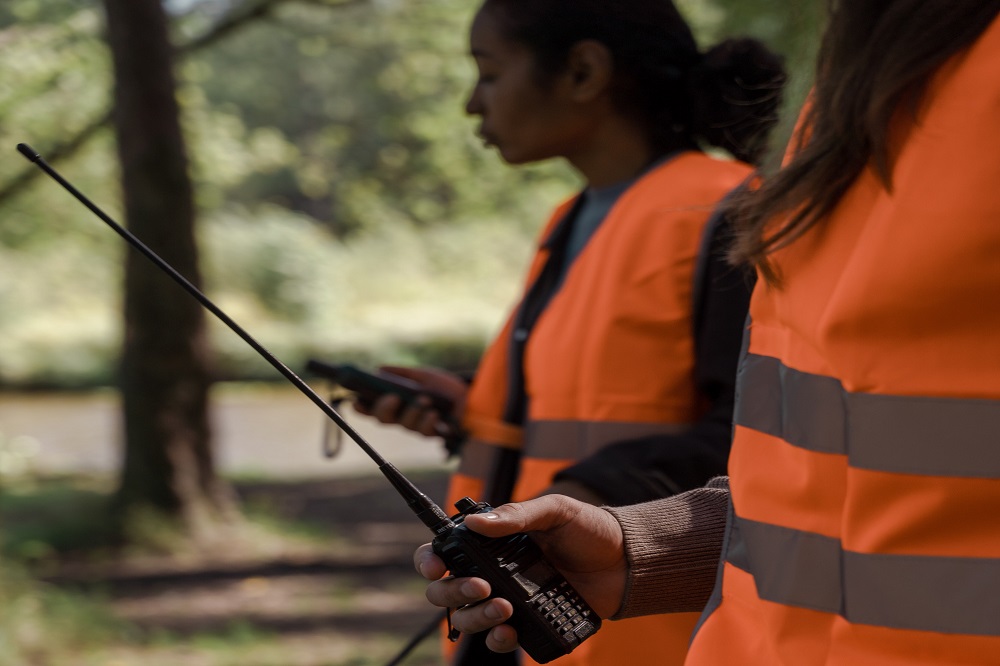It’s fairly common for mountain regions to lack a proper phone signal, especially in remote areas.
For that reason, while hiking in the mountain range, a lot of people resort to simple tools for communication that don’t rely on such technology, and one of these tools is the walkie talkie or two way radio. So, do walkie talkies work in the mountains?
In today’s article, we’ll answer this question and provide you with a brief guide on the proper way to maximize the signal of a walkie talkie. Let’s dive in!
Do Walkie Talkies Work in the Mountains?
Walkie talkies use radio waves to communicate with each other through a special frequency. So technically speaking, they can work just about anywhere where there’s a proper medium for the waves to transfer.
However, two way radios’ range varies from one model to the other, and they’re also subject to signal deterioration due to obstructions that diminish or completely block the path of the waves, such as dense woods, buildings, and other large obstacles.
As a rule of thumb, radio waves operate at the “light of sight” level. In other words, if you can see it, you can hear it.
What Are the Factors That Affect the Signal of Two Way Radios?
Now that you know that two way radios can work in the mountain but are limited to certain factors. Let’s have a quick look at each one of these factors:
Walkie Talkie Range
One of the major limiting factors to walkie talkie performance is the range and antenna of the device. Some walkie talkies are short-ranged while others are long-ranged.
In a vastly large landscape like in the mountains, you need to make sure that the walkie talkie used provides a large-range communication to function properly.
Location
Your location in the mountain can have an impact on the quality of walkie talkie because obstacles are the biggest challenge for radio waves.
If you’re communicating through a clear region, such as the tops of a mountain or the top of a mountain and a base near it with little obstacles, the signal should be clear enough through the walkie talkie.
Environment
While mild rain may not be a problem for a powerful walkie talkie, heavy blizzards that hit the mountainous regions can overpower the signal of the radio and make it less clear.
Additionally, extremely cold temperatures at the top can damage the internal components of the radio and prevent it from functioning properly.
How to Improve the Signal of Walkie Talkies
- Opt for a new walkie talkie before heading to the mountain because older ones lose their power with time
- Use a new and high quality battery for maximum performance
- Make sure that the antenna is undamaged for maximum amplification, or upgrade to a more powerful antenna
- Try to stand in the line of sight of those you’re communicating with or use repeaters as relay points to retain the quality of the signal.
What Are the Best Two Way Radios for Mountain Use?
There are plenty of decent options on the market. However, when it comes to mountain use, you need a powerful walkie talkie that is specifically designed for that purpose. In that case, we recommend the Midland GXT1050VP4 Waterproof 50 Channel GMRS Two-Way Radio.
Wrap Up
There you have it! A brief guide with all the information you need to know about the use of walkie talkies and two way radios in the mountains.
While walkie talkies work there properly, they’re usually limited to obstructions and factors that weaken the signal.
For that reason, it’s important to use the walkie talkie in a clear area and use a reliable model, such as the Midland GXT1050VP4 Waterproof 50 Channel GMRS Two-Way Radio for maximum performance!
